Symbols of the University | The Cornell Public Library | Cornell’s Twelve Presidents | | Andrew Dickson White, President, 1866-1885 | | Charles Kendall Adams, President, 1885-1892 | | Jacob Gould Schurman, President, 1892-1920 | | Livingston Farrand, President, 1921-1937 | | Edmund Ezra Day, President, 1937-1949 | | Deane Waldo Malott, President, 1951-1963 | | James Alfred Perkins, President, 1963-1969 | | Dale Raymond Corson, President, 1969-1977 | | Frank Howard Trevor Rhodes, President, 1977-1995 | | Hunter Ripley Rawlings III, President, 1995-2003 | | Jeffrey Sean Lehman, 2003-2005 | | David J. Skorton, 2006 | Inaugurating the Presidents |
| Cornell’s Twelve Presidents Deane Waldo Malott, President, 1951-1963 In 1951, Deane W. Malott became the sixth president of Cornell University, a position he held until his retirement in 1963. Malott’s years represent the largest period of building in the history of the University, with over $100,000,000 worth of construction. During this period Cornell constructed new campuses for the Engineering, Industrial and Labor Relations, and Veterinary schools. Other new facilities included Olin Library, Anabel Taylor Hall, the Materials Science Center, Statler Hall, Mann Library, Morrison Hall, Riley-Robb Hall, Teagle Hall, Lynah Rink, and Helen Newman Hall, north campus dorms and Mary Donlon Hall, the Industrial Research Park near the airport, Gannett Medical Clinic, the Laboratory of Ornithology, and the Ionospheric Research Facility in Arecibo, Puerto Rico. The Andrew Dickson White House was renovated as an art museum and its carriage house as the Big Red Barn. During Malott’s administration, the athletic program was expanded into one of the largest intercollegiate programs in the world. In 1953, the Medical College was reorganized as the New York Hospital-Cornell Medical Center, with a Graduate School. Sponsored research jumped to a massive $39,400,000 in 1960-1961; research became a group effort, the beginning of “big science.”
With the rise of McCarthyism, Malott faced one of the major threats to academic freedom in the 20th century. While his personal feelings were conservative, in public statements he defended academic freedom and criticized McCarthyism. Malott succeeded in maintaining an atmosphere where current issues could be freely discussed.
Deane Waldo Malott was born in Abilene, Kansas in 1898. He received a bachelor’s degree from the University of Kansas in 1921, and a master’s degree from the Harvard Business School in 1923. From 1923 to 1929 he was Assistant Dean of the Harvard Business School; from 1929 to 1933 he was Vice President of the Hawaiian Pineapple Company; and then he returned to Harvard as Associate Professor in the Business School. In 1939, Malott became Chancellor of the University of Kansas. In 1951, he became the sixth president of Cornell University, a position he held until his retirement in 1963. He died in 1996. << Prev | Next >> | 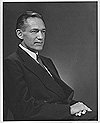 + +
Deane Waldo Malott
Deane Waldo Malott, ca. 1955. 
 + +
The 1949 Cornell University Faculty
In 1949, when this picture was taken of the Cornell faculty, there were 362 professors, 243 associate professors, and 172 assistant professors. 
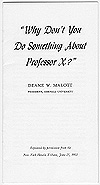 + +
The teaching profession must not be driven from its traditional stronghold of free speech to a position where it will fear to stand up and be counted. With academic tenure goes the responsibility for a clear and forthright definition of one’s views. These professors of ours must have the right to profess; they must not be scourged from the public forum, else eventually only conformists will enter the teaching profession, leadership in the realm of ideas will wane, and the universities will sink to mediocrity.
Deane W. Malott, Why Don’t You Do Something About Professor X?

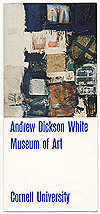 + +
The Andrew Dickson White Museum of Art
In 1953, an art museum was established on campus in the Andrew Dickson White House. Cornell's art collection remained there until the opening of the Herbert F. Johnson Museum in 1973. 
 + +
Aerial view of the Engineering Quad, 1957

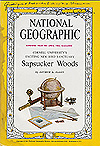 + +
Special Issue of the National Geographic, 1962.
The Laboratory of Ornithology, with laboratories, sound-recording studios, a photography workroom, an aviary for research in bird behavior, and broad windows overlooking a pond, opened in 1956. 
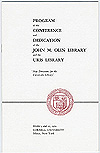 + +
Dedication of Olin and Uris Libraries
The John M. Olin Graduate Library was built between 1959 and 1961 on the site of Boardman Hall, which was demolished to make room for the new graduate library. In October, 1962, it was dedicated, when the University Library was also dedicated as the Uris Library. 
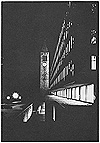 + +
Olin and Uris Libraries, 1962

|
